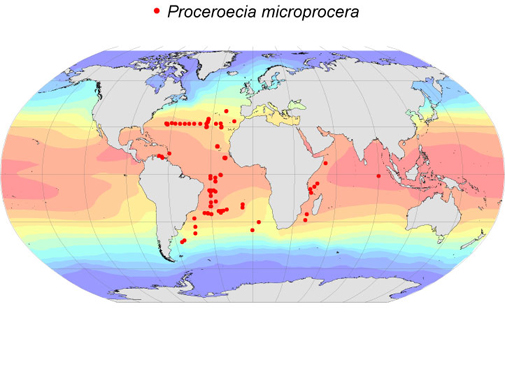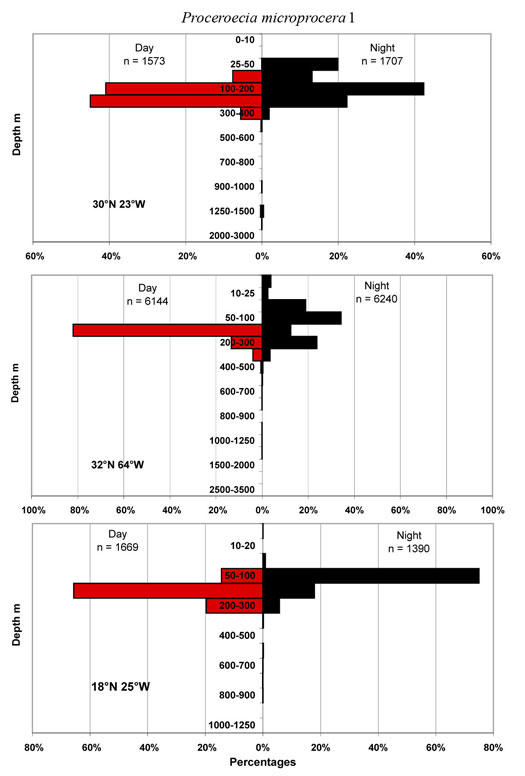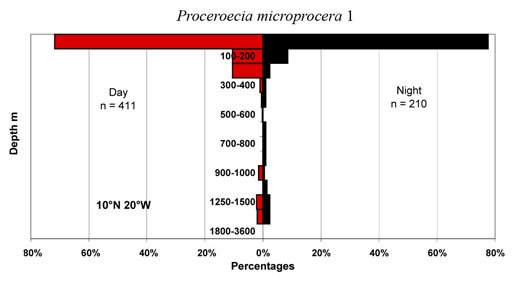Atlas of Atlantic Ostracods
Taxon details
Proceroecia microprocera (Angel, 1971)
- Order:
- MYODOCOPA
- Suborder:
- Halocypridina
- Family:
- Halocyprididae
- Subfamily:
- Conchoecinae
- Size range (females):
- 0.9-1.0 mm
- Size range (males):
- 0.8-0.9 mm
- Depth:
- epi-/mesopelagic
Notes
191 records
This species was only recognised when Angel (1971) found that in the Northeast Atlantic the prevailing concept of Conchoecia procera was a complex of three species, with consistent differences in their carapace sizes. Poulsen (1973) placed C. procera in a new genus Paraconchoecia, but Kock (1992) split this genus, placing the species originally in Muller’s ‘procera group’ in Proceroecia. He designated P. macroprocera as the type species for the genus. Thus any of the pre-1971 records of P. procera may have included this species. It has been reported from the Atlantic and Indian Oceans at oceans at latitudes <36°, and recently from the Aegean Sea, but so far not from the Pacific. The bathymetric profiles show that by day this species occurs mostly between 50 and 300m, and a small proportion of the population migrates up into the epipelagic at night. Occasional specimens have been taken in the neuston samples. Its small size probably means it has been under sampled by most nets used in plankton surveys. Where it co-occurs with procera it has a slightly shallower bathymetric distribution.
Living animals are translucent and almost colourless.
| Equator | n | Mean mm | s.d. | Range mm |
|---|---|---|---|---|
| Female | 66 | 0.97 | 0.026 | 0.92-1.02 |
| Male | 50 | 0.84 | 0.022 | 0.78-0.88 |
| A-1 | 2 | 0.66 |
| Bermuda | n | Mean mm | s.d. | Range mm |
|---|---|---|---|---|
| Female | 255 | 0.96 | 0.041 | 0.86-1.04 |
| Male | 213 | 0.84 | 0.020 | 0.76-0.90 |
| A-1 |
| Azores Front | n | Mean mm | s.d. | Range mm |
|---|---|---|---|---|
| Female | Female | 52 | 0.92 | 0.029 |
| Male | Male | 23 | 0.83 | 0.053 |
| A-1 |






